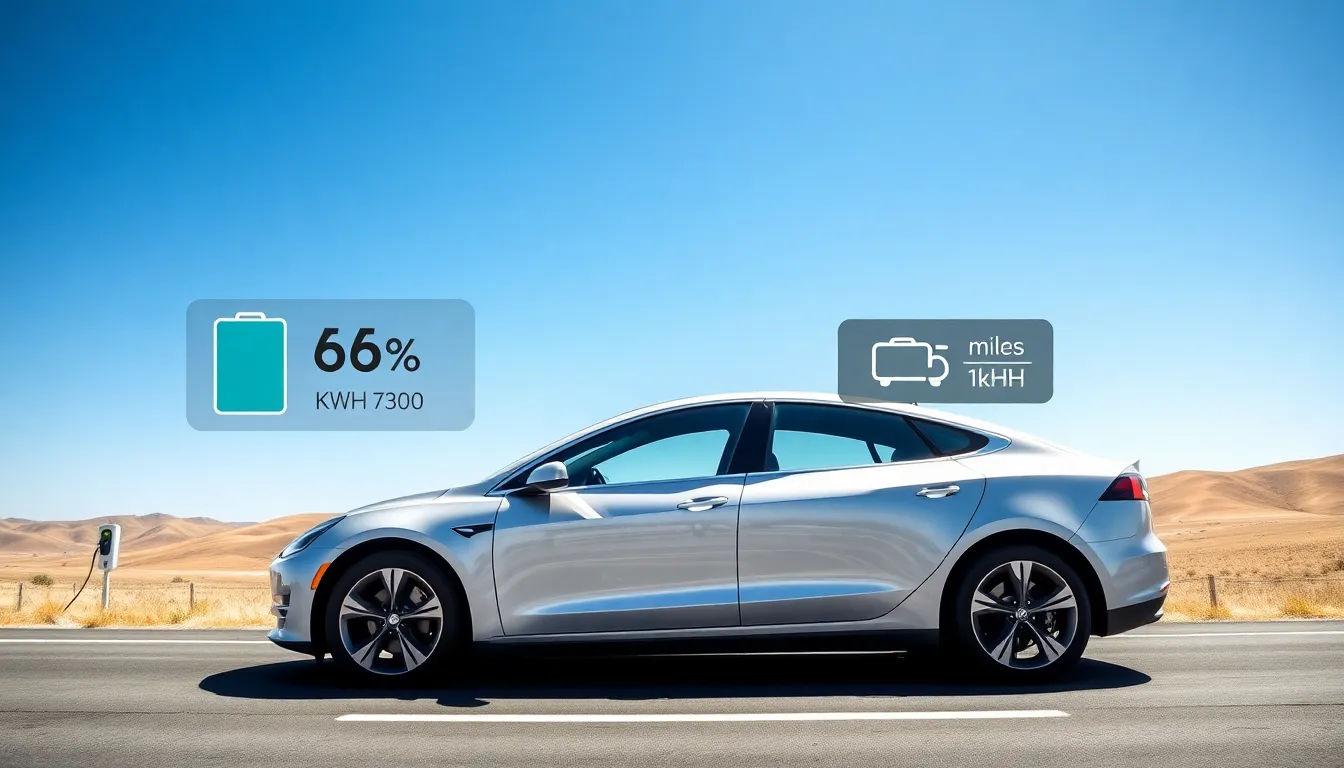If you think electric vehicles are just glorified golf carts with a battery extension, think again. In a world where range anxiety is as real as coffee breaks at the office, electric vehicles (EVs) are stepping up their game to prove that they can outlast traditional gas guzzlers. Get ready to jump into the realm of the longest range electric vehicles, where the only worry is figuring out where to put that extra charging cable.
Table of Contents
ToggleUnderstanding Electric Vehicle Range

Electric vehicle range refers to the distance an EV can travel on a single charge. Simple, right? But the nuances are where the magic happens. Range is primarily determined by the vehicle’s battery size, energy efficiency, and other innovative technologies.
For instance, the range can vary significantly among different models due to the way these vehicles use power. Let’s not forget real-world factors such as weather conditions, driving habits, and terrain, which can all affect that carefully calculated number you see on a brochure. Two factors, but, stand out: battery capacity measured in kilowatt-hours (kWh) and miles per kWh efficiency. The greater the kWh, the longer the journey. Similarly, higher efficiency means more distance traveled per unit of energy consumed.
Factors Influencing Electric Vehicle Range
Several key factors influence the range of electric vehicles, and knowing them can help prospective buyers make informed decisions.
Battery Capacity
The most obvious factor. Bigger batteries, larger ranges. A vehicle with a 100 kWh battery can typically go much farther than one with a 50 kWh battery.
Driving Conditions
Ever gone on a road trip through a hilly landscape? The same principle applies here. High speeds, aggressive acceleration, and steep inclines can quickly drain an EV’s battery. Conversely, steady cruising on flat highways can extend range significantly.
Vehicle Efficiency
Weight matters. A lighter vehicle generally consumes less energy. Advanced materials and design choices, like reducing drag, contribute to efficiency.
Climate
Cold weather can sap battery life, sometimes reducing range by up to 40%. Warm temperatures, on the flip side, are generally more favorable for EV batteries.
Use of Accessories
Using your air conditioning or heating can also take a toll. Every gadget you power draws energy and impacts your total range.
Top Longest Range Electric Vehicles of 2025
In 2025, a slew of electric vehicles promises not just long-range capabilities but also state-of-the-art features. Here are some of the standouts:
- Lucid Air: Topping the list, the Lucid Air offers an astonishing range of over 500 miles on a single charge, making it one of the most impressive long-range electric vehicles on the market today. Not only does it excel in battery tech, but it also boasts luxurious design and cutting-edge tech.
- Tesla Model S: A veteran in this space, the Model S has always been known for its exceptional range. The latest versions can travel over 400 miles, making it a favorite among EV enthusiasts.
- Mercedes EQS: This luxury EV is not just about looks. With a range around 478 miles, the EQS is a testament to how traditional brands are evolving to meet today’s demands.
- Ford F-150 Lightning: Yes, you read it right. The electric version of the beloved F-150 offers up to 300 miles on a charge while still staying truck tough.
- BMW iX: The iX pushes out around 324 miles, encapsulating BMW’s luxury while investing in sustainable energy.
Comparison of Leading Electric Vehicles
When comparing these vehicles, three primary aspects come into play: range, price, and charging infrastructure. The Lucid Air leads on range, but the Tesla Model S has a robust charging network that makes it incredibly user-friendly. The Ford F-150 Lightning extends range to those who still wish to remain in the pickup realm, proving that versatility and environmental awareness can coalesce.
Innovative Technologies Supporting Extended Range
To achieve those eye-popping ranges, manufacturers are continually applying advanced technologies.
Battery Chemistry
New lithium-ion battery formulations promise improved energy density. Solid-state batteries, which are currently in development, could change the game by offering even higher ranges with reduced weight and charging times.
Regenerative Braking
This technology captures energy usually lost during braking and redirects it back to the battery, helping to extend driving ranges, especially in stop-and-go traffic. It’s like turning red lights into green lights, energy-wise, that is.
Aerodynamics and Weight Reduction
Automakers are redesigning vehicles with streamlined shapes and lighter materials to enhance energy efficiency. A well-designed body can significantly reduce drag, allowing vehicles to glide through the air rather than wrestle with it.
Future Trends in Electric Vehicle Range
As we gaze into the crystal ball of EV technology, several key trends emerge:
Enhanced Charging Infrastructure
Fast charging stations are becoming more widespread, enabling drivers to recharge in a fraction of the time. Imagine sipping your favorite latte as your car powers up.
Artificial Intelligence and Vehicle Management
Smart EVs will soon be able to optimize battery use by learning from drivers’ habits and even adjusting energy consumption based on route planning.
Emerging Battery Technologies
With continued innovations such as lithium-silicon batteries and beyond, expect ranges to leap dramatically while lowering costs. These breakthroughs could make owning an electric vehicle even more appealing.
